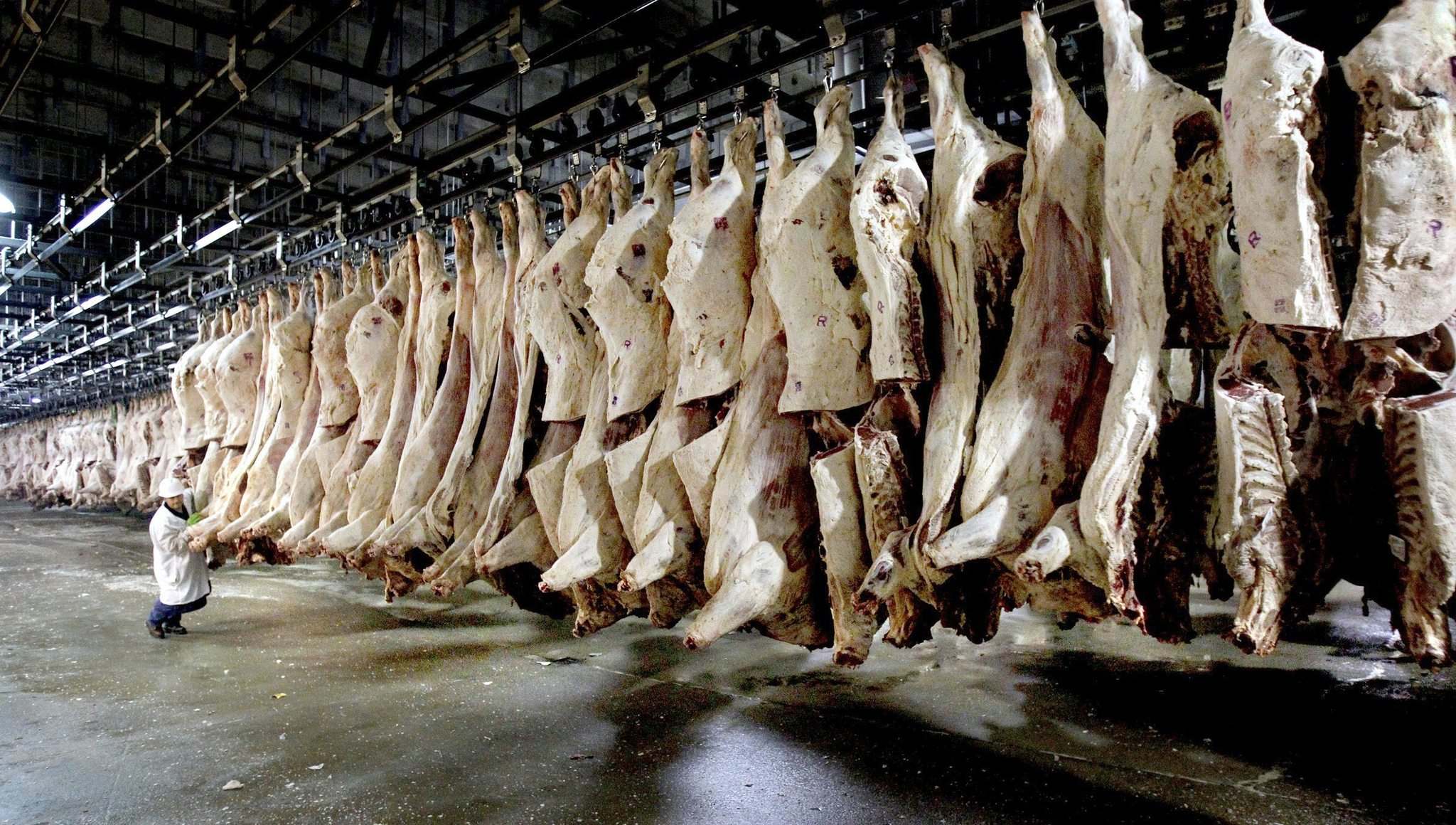Flabby Cattle Cost Beef Industry Millions of Dollars

In an industry in which producers get paid by the pound, the trend towards heavier animals may sound like a good thing. But not when it comes to processing efficiency
by Laura Rance – Glacier FarmMedia
It seems Canadian beef cattle have the same problem as many consumers — they’re getting heavier and fatter. In fact, it’s costing the beef industry millions in lost revenue.
“One processor I talked to characterizes this as the ‘greatest value destructor ever,’” Mark Klassen, director of technical services for the Canadian Cattlemen’s Association, told a recent industry seminar.
“quality defects are costing the beef sector in Canada around $196 million annually”
The average slaughter weights of cattle delivered to packing plants has been increasing by about seven pounds per year since the mid-1970s, Klassen said. The latest industry audit on beef quality found carcass weights increased 6.4 per cent — or 52 pounds — between 2010 and 2016.
Because much of the extra weight on these animals is external fat that is trimmed off before the meat is sold at retail, there has been a significant decline in the ratio of useable meat processors get from these larger animals. The external fat on carcasses has increased 76 per cent since 2011.
The ratio of carcasses that achieved the top yield grade in a 2016-17 audit was 37 per cent, down from 52 per cent in 2010-11 and 63 per cent in 2000.
“A very core attribute of the Canadian beef advantage, namely yield, is no longer what it once was,” Klassen said.
However, whereas some quality defects, such as bruising or damaged hides, reduce how much the producer gets paid, packers are largely absorbing the hit from heavier carcass weights.
“The challenge for processors is that they need every animal they can get. So, at least in Western Canada, there is a reluctance to institute some of the traditional disincentives for producing heavier-than-desired carcasses,” he said.
The Beef Cattle Research Council, with support from the federal government, conducts quality audits every five years. Technicians spend time at slaughterhouses monitoring the condition of the cattle as they enter, and how that correlates with the meat they produce.
The council also regularly does a retail audit in which consumers are provided with four types of steaks to cook at home and rank them on a score of one to 10. The latest audit in 2015 set consumer satisfaction at 79 per cent, a sign consumers are generally happy with the beef they buy.
While the ultimate goal of these efforts is to improve the quality of meat that ends up on a customer’s plate, these audits also serve as a report card on how the industry is doing on a whole host of metrics — everything from genetics, to handling practices, to feeding regimes.
Each quality defect is quantified in dollars to reflect the effect on the industry’s profitability. It has implications for how producers, right through to processors, operate.
For example, animals arriving at the slaughterhouse with a lot of muck and manure on their hides reduces the value of the carcass by about $10. Dirty hides can be reduced with better drainage and more bedding in feeding pens.
The industry is making progress in some areas, such as lower incidences of major bruising, but losing ground in others.
One area raising red flags is a doubling in the occurrence of abscessed livers deemed unfit for human consumption and either sent for pet food or rejected altogether. Klassen said more research is needed to better understand why this is happening, and to find alternatives to antimicrobials for controlling the problem.
Researchers believe it’s tied to how grain rations are used in feedlots. Cattle finished in forage-based systems have a lower incidence of liver issues, but the tradeoff is they take longer to reach market weight.
All in all, quality defects are costing the beef sector in Canada around $196 million annually, up 46 per cent over the last audit. That’s largely due to the fact that beef prices are at historically high levels, so the cost of mistakes is higher, Klassen said.
However, the more the supply chain knows about how management decisions affect final values, the more incentive there is to try harder.
Laura Rance is editorial director at Glacier FarmMedia. She can be reached at 204-792-4382 or laura@fbcpublishing.com
source: Winnipeg Free Press












